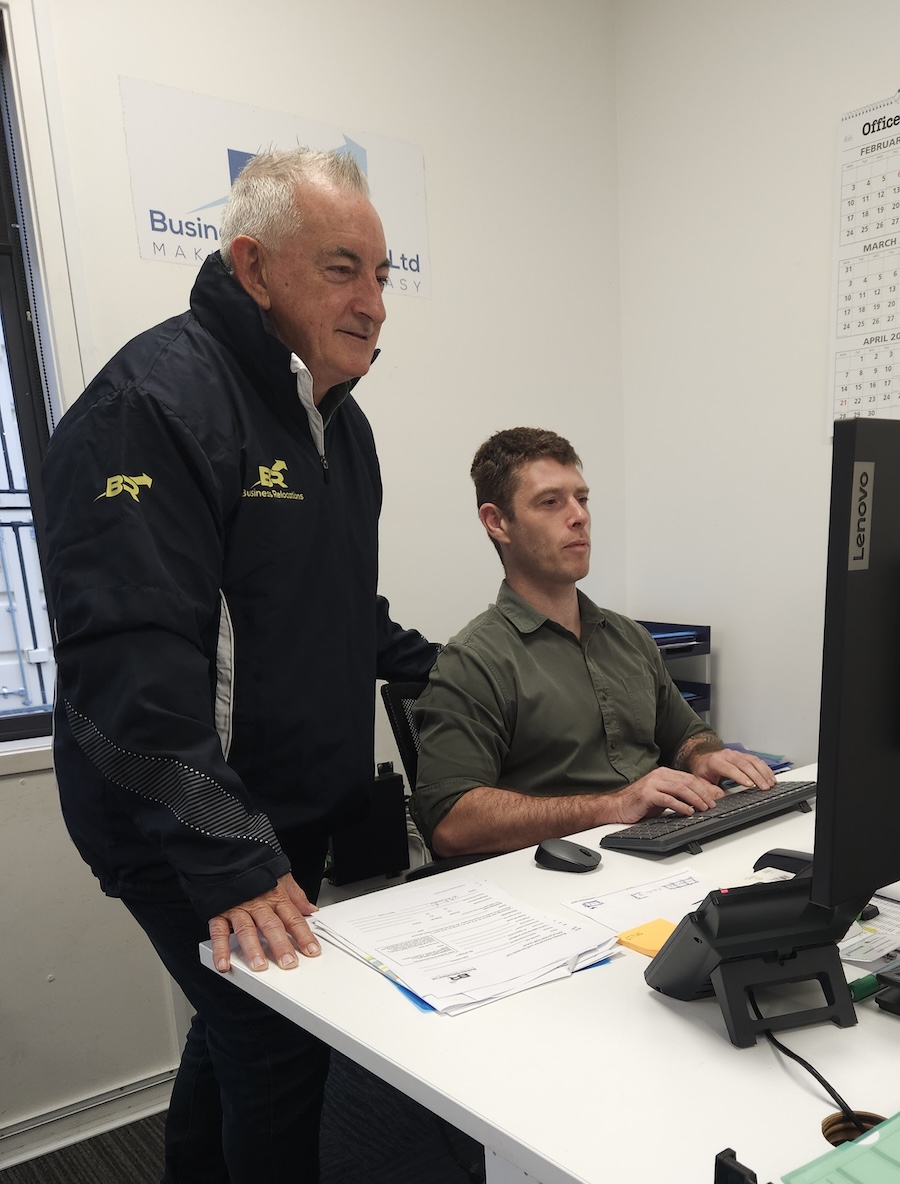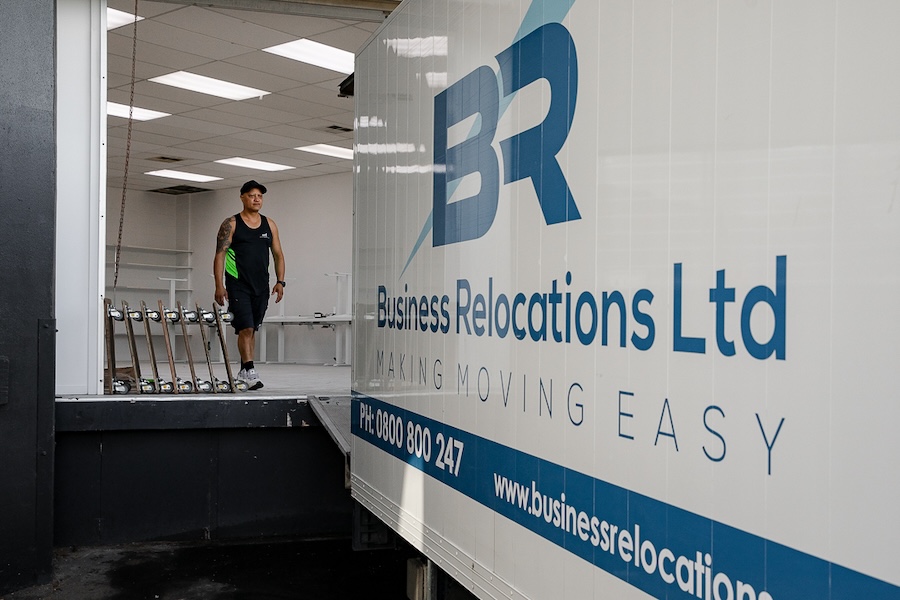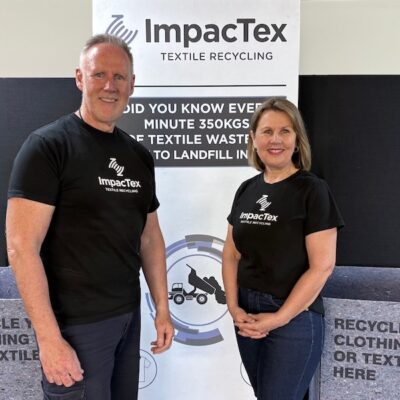Moving with purpose
It’s not every day you see people hauling couches up and down the office stairs as part of their daily work load. But if you do, chances are it’s Business Relocations.
More than just a moving company, Business Relocations is shifting what it means to operate responsibly – offsetting fleet emissions by planting native trees, drastically reducing landfill waste through smart recycling initiatives, and embracing sustainable business practices.
NZBusiness sits down with co-owner Bruce Reid to explore how the company is driving sustainability, the latest trends in office relocations, and strategies for business growth.
When Bruce Reid first stepped into Business Relocations in 2017, he had no intention of becoming a business owner.
With a background in business consulting and years in the NGO sector, his expertise was in strategy and operations, not furniture removals. But after helping streamline the company’s processes, he was asked to stay – permanently.
“Raymond Dobbe, the original owner, wanted me to come in and help improve efficiencies. After a couple of years, I thought I’d done my job, but Raymond said, ‘Why don’t you buy me out?’,” Bruce explains.
By 2020, Bruce had done just that.
He joined Dave Williams, who has been with the company since 2002 as co-owner of both Business Relocations and its sister company, World Moving & Storage.
Founded in 2001 and based in Auckland, Business Relocations specialises in office and commercial moves, helping companies transition between spaces with minimal disruption.
Their expertise spans everything from large-scale corporate relocations to warehouses moves and smaller internal office shifts, with over 30 trucks and about 50 staff including removalists and specialists nation-wide.
Office relocation trends
Bruce says that the commercial moving sector has changed significantly in recent years. During the pandemic, many businesses vacated office spaces in Auckland’s CBD as remote work became the norm, leading to a rise in decentralisation and suburban office hubs.
Bruce says that trend is now reversing, with more companies relocating back into the city.
“We saw people leave the city, and we are actually moving a lot more people back into the city again. So, I think we’ve kind of gone through a cycle on that.”
He believes that businesses recognise the importance of in-person collaboration, team culture, and spontaneous problem-solving.
A revived city atmosphere and more competitive office rental rates have also encouraged companies to return, Bruce adds.
However, while some are coming back to city office spaces, others see more value in positioning their offices in regional hubs like Hamilton.
“Aucklanders often sit in traffic for 1.5 hours just to get from one side of the city to the other for work, while it takes the same amount of time to commute to Hamilton on the new express way.
“We’re doing a lot more work down in Hamilton, which I think is maybe driven by leases and costs down there. People have realised over this time they don’t necessarily have to be sitting in the middle of the market.”
As office relocation trends have shifted, so has Business Relocations’ approach to its client base. While the company once relied heavily on one-off moving jobs, it has since pivoted towards long-term contracts with corporate clients, ensuring greater stability and efficiency.
“Five years ago, 70 percent of our work was one-off jobs. Now, it’s the opposite – 70 percent is contracted business, providing us with consistency and the ability to plan long-term,” says Bruce.
This shift has been a strategic move in response to changing business needs. Rather than focusing solely on large, single relocations, Business Relocations now works with key corporate clients, including banks and large companies, handling their ongoing office moves, storage, and internal space reconfigurations.

Sustainable action
According to Bruce, the moving industry can no longer afford to treat sustainability as an afterthought. He says that Business Relocations has embraced it as a core responsibility, ensuring meaningful action rather than mere “greenwashing”.
“We bought 21 hectares of old forestry land inMaungaturoto and we’re planting native trees on it, not as part of a carbon credit scheme, just because it’s the right thing to do. “By the end of the year, we will have planted enough trees to offset our fleet’s carbon emissions from two years ago.”
To further minimise its environmental impact, Business Relocations is modernising its fleet, with a target of ensuring all vehicles are under five years old by 2026. Bruce says that this initiative is expected to reduce emissions by 40-60 percent, making their operations significantly more eco-friendly.
Beyond this, the company is also helping clients make greener choices during relocations. They offer inventory tracking systems to prevent unnecessary storage of unused items and encourage businesses to repurpose office assets instead of discarding them.
They have partnered with charity All Heart NZ to repurpose office furniture.
Instead of sending unwanted desks and chairs to landfill, they’re refurbished and donated to schools and community organisations.
“The biggest challenge is MDF furniture – it’s mostly glue, so it’s hard to recycle. But All Heart NZ is doing amazing work in repurposing what they can. Through our redirection efforts about 80 percent of landfill waste has been reduced.
“A lot of corporates are now more conscious about what they’ve got in storage. They don’t want to keep unnecessary stock, and they don’t want to add to landfill. We help them find ways to reuse and repurpose furniture efficiently.”
Looking ahead, Bruce is also exploring alternative fuels for its fleet and more sustainable packing materials, reinforcing its commitment to not just moving businesses, but moving towards a greener future.
Heavy on wellbeing
With a physically demanding job like commercial moving, Bruce says that staff wellbeing is a priority. The owners have training as a key focus. Proper lifting techniques and the use of equipment like tail lifts and dollies help prevent injuries.
“We don’t want ‘hero lifts’, where someone tries to carry a fridge on their own,” Bruce says.
New employees quickly learn the importance of technique over raw strength.
In fact, it’s not uncommon to see workers carrying sofas up and down staircases at the companies Avondale home, not for a job, but for practice.
“We’ve got a couple of flights of stairs leading down to the lunchroom, and you’ll often see the guys carrying a couch up and down, just practising their two-person lifts.”
He says that it might look like an unusual workout routine, but this hands-on approach builds confidence and ensures that staff are well-prepared before heading out on real jobs.
Another key change is the move away from casual employment agreements, ensuring staff have guaranteed hours.
“In this industry, it’s common to rely on casual workers. But we want our people to have stability, so we offer permanent employment agreements with guaranteed hours. That way, they know they’ll have rent money, whether the workload fluctuates or not.”
With the business operating efficiently, Bruce is now focusing on refining the company’s processes and ensuring they remain agile in an evolving market.
“Our goal isn’t to be the biggest, but to be the best. We’re looking at going paperless, improving warehousing efficiencies, and continuing to build strong client relationships.”







